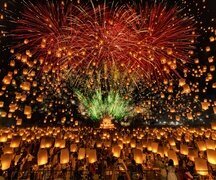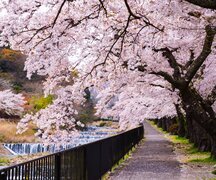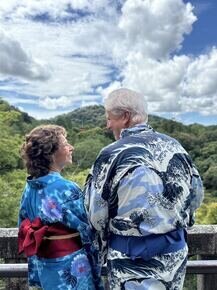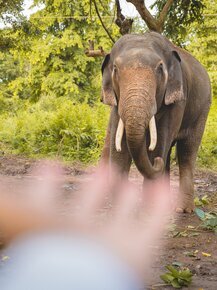Based on our years of custom experience in various regions of Asia, we understand that most travelers wish to visit specific destinations at the best times and have a deep interest in unique festival experiences.
Therefore, we have crafted a "Best Time to Visit" guide based on the following four dimensions for each month from January to December: Top Destinations with Ideal Weather, Destinations with Comparatively Good Weather, Coldest and Hottest Places, Places with Significant Rainfall, and Festivals Not to Miss.
We hope this guide helps you choose destinations that match both your holiday schedule and personal interests. You can also contact us directly to help you customize a suitable plan.
- Jan.
- Feb.
- Mar.
- Apr.
- May
- Jun.
- Jul.
- Aug.
- Sep.
- Oct.
- Nov.
- Dec.
Top Destinations with Ideal Weather in January

January is an excellent month to visit Philippines. Although you are likely to experience a little rainfall and during your travels to gorgeous islands, it's not hot or humid. The temperatures average at highs close to 31°C (88°F) and lows close to 22°C (72°F).
View moreDestinations with Comparatively Good Weather in January
Coldest and Hottest Places in January

January is the coldest month in South Korea. It ranges from extremely cold during the month and a mean temperature of -3°C (27°F) can be expected. But it's free of large crowds and groups of tourists, and prices for most things are not as high as the other months of the year.

January is in mid-winter in Japan. It's the coldest and driest month of the year. Snow falls more frequently than in December (though less in quantity). Thus, January is the best time for winter sports and experiencing a ryokan (Japanese inn) with hot springs.

January is the coldest month in China. Large parts of China reach the peak of severe winter weather. Snow falls in North China (in areas such as Harbin, Beijing, and Tianjin). If you want to enjoy stunning snow scenery and exciting snow activities, go to North China.

January is the winter season in Bhutan. It can be challenging to navigate the eastern part of the country during this season due to heavy snowfall, but it is the best time to visit the western region. As it is the off-peak season in West Bhutan, hotel prices are low, and there are fewer crowds.

As the coldest month in Nepal, the weather is cold to mild, dry, and sunny. The temperature in mountainous regions can drop to -10°C (14°F) at night, while the daily high temperature typically reaches 20°C (68°F) in Pokhara.

Temperatures and weather conditions vary throughout Israel in January. It is the month with the lowest average temperature. The ski haven of Mount Hermon in the northern part of the country sees snowfall and much colder temperatures.

Although It rarely snows in January, but if you get lucky enough to catch it towards the higher-altitude areas, you might be able to see the rust-colored mountains of Wadi Rum and the burnt red stone carvings of Petra blanketed in snow.
Places with Significant Rainfall in January
Festivals Not to Miss in January

During the Tet (Vietnamese New Year), the cities, especially Hanoi and Ho Chi Minh City, are full of life with parades, street festivals, and vibrant market scenes — it's a unique, festive atmosphere.

Welcome the new year in an enchanting cultural atmosphere in Chiang Mai, surrounded by traditional Lanna music, dance, and rituals. Numerous glowing lanterns will be drifting into the night.

Marvel at the ice sculptures and castles, and enjoy ice slides during the annual Harbin Ice and Snow Festival. You could also go to Snow Town and experience the traditional winter lifestyle in northeast China.
Top Destinations with Ideal Weather in February

February is a fantastic month to be traveling in the Philippines. It's largely cool and dry, with temperatures hovering around highs of 30°C (86°F) and lows of 22°C (72°F).
View moreDestinations with Comparatively Good Weather in February

February marks the end of harshly cold weather conditions in Israel. Although weather conditions will depend on which part of the country you're in, the first part of February will remain comfortably cool whereas the second half of the month will see a gradual increase in temperatures.
View moreColdest and Hottest Places in February

February is one of the coldest months in South Korea. However, the days are generally clear and starting to get warmer from the nail-biting temperatures of January. The country experiences average highs of 10°C (50°F) and average lows of -5°C (23°F).

Winter continues in February in Japan. Skiing conditions reach their best in northern Japan (Hokkaido). Central Japan (Tokyo, Kyoto, and Osaka) stays cold and quiet, while spring shows signs of coming in the warm south (Okinawa).

February is the last full month of winter for all but the far north of China. Winter is still in full swing in North China with freezing weather. In Central and South China, it is slightly warmer than in January but still feels damp and chilly.

December to February is the winter season in Bhutan. It can be challenging to navigate the eastern part of the country during this season due to heavy snowfall, but it is the best time to visit the western region.

February is again in the middle of the southern hemisphere summer and Bali's November–March wet season. Therefore, the weather is warm to hot, and still very rainy.
Places with Significant Rainfall in February
Festivals Not to Miss in February

Marvel at the ice sculptures and castles, and enjoy ice slides during the annual Harbin Ice and Snow Festival. You could also go to Snow Town and experience the traditional winter lifestyle in northeast China.

For cultural travelers, attend the Sapporo Snow Festival, showcasing massive ice sculptures and illuminated night displays, while the Otaru Snow Light Path Festival offers a lantern-lit canal and snow-covered street, creating a romantic ambiance.

The Navam Perahera has become one of the most popular and important pageants in Sri Lanka. The parade features beautifully decorated elephants, accompanied by whip - crackers, fire dancers, flag - bearers, traditional dancers, and musicians.
Top Destinations with Ideal Weather in March

The best time to visit Bhutan is in spring (March to May) when the weather is pleasant, and the valleys are in full bloom. In spring, the average temperature in Bhutan is around 11–20°C (35–68°F), and the country receives an average rainfall of 100 mm (4 in).

March is a very good month to be in the Philippines. The odd rain shower aside, it continues to remain largely dry. The average temperature ranges from an approximate high of 32°C (90°F) and low of 22°C (72°F).
View moreDestinations with Comparatively Good Weather in March
Coldest and Hottest Places in March

March is the beginning of spring in South Korea. This means that it's not as cold as it was during the winter months of January or February, and an average temperature high of 13°C (55°F) and an average temperature low of -1°C (30°F) can be expected.

March comes at the end of the southern hemisphere summer and ends Bali's wet season. The weather is warm to hot, and still rainy, though less than in February. There is still plenty of sun to enjoy beaches between the downpours.

The weather in March in Cambodia is generally very warm, with hot and sunny days throughout the month.With the monsoon rains yet to arrive, March is a good time for travelers who don't mind the heat to visit all of Cambodia.

March sees the start of India's hot season. So there is plenty of sunshine with low rainfall. It is a wonderful time for outdoor activities such as visiting historic sites and spotting animals in wild.

March is in the hot tail end of the Laos dry season. The weather gets hotter as the month goes on with an average temperature range of 22°C to 35°C. Although temperatures often reach over 35°C, humidity remains at comfortable levels.

March does see around 15 cm (6 inches) of rainfall, with it being a moderately rainy time of the year. You can expect rain approximately 12 days out of the month, definitely not enough to put off traveling to Singapore in March.
Places with Significant Rainfall in March
Festivals Not to Miss in March

Holi is celebrated all over India, but the best color fights usually take place in North India (Delhi, Jaipur, and other cities in Rajasthan).
Top Destinations with Ideal Weather in April

April sees the middle of spring with pleasant weather in almost all cities of South Korea. The overall temperature does not fluctuate much, with the highest temperatures not exceeding 22°C (71°F).
View more
April is one of the dry months and this results in the Southeast Asian nation remaining an ever-popular travel destination. You can expect an average temperature range of 25°C (77°F) – 33°C (91°F).
View more
April is the spring season, and it is the best time to visit Bhutan. The landscape is beautiful, with lush green fields, verdant mountain slopes, and blooming valleys. The weather is pleasant and the climate is reasonably dry.

April marks the complete onset of spring. The weather conditions are largely warm and dry with little rain. With the exception of the Dead Sea region which experiences warmer weather conditions than do other parts of Israel, days are comfortable in Jerusalem, Tel Aviv, and Tiberias.
View moreDestinations with Comparatively Good Weather in April

April is one of the last truly dry months and this results in the Southeast Asian nation and its more than 7,500 islands remaining an ever-popular travel destination. You can expect an average temperature range of 25°C (77°F) – 33°C (91°F) during April.
View moreHottest Places in April

April is the beginning of the dry season, and it is hot and sunny averaging 8 hours per day. The average daily maximum is 34°C (93°F), and the average nightly minimum is a comfortable 25°C (77°F).

April is the hottest month of the year, and it remains reasonably dry with rainfall expected on only a few days. Temperatures reach an average maximum of 35°C (95°F), but it can get even higher in the cities.

India heats up in April — temperatures reach the high 30s°C (100+°F), but it is still pleasant enough for outdoor activities in popular cities. The month is particularly dry and sunny.

April is the hottest month, the climax of the hot dry season. The average daily high temperatures ranging from 30°C to 35°C. Temperatures in the southern regions can reach 40°C.

April is the hottest month of the year, with temperatures often reaching 38–40°C (100–104°F). In the north, scorching heat is worsened by smoky skies from crop burning.
Places with Significant Rainfall in April
Festivals Not to Miss in April

Ramadan is a month-long festival of fasting where in Muslims fast for the entire day and then break the fasts as the sun sets.

Beyond water fights, cities like Chiang Mai, Ayutthaya, and Sukhothai hold grand parades and peaceful Buddha bathing ceremonies.
Top Destinations with Ideal Weather in May

May marks the end of spring in South Korea and brings pleasant weather with it. Temperatures range from lows of 8°C (46°F) to highs of 24°C (75°F), depending on which part of the country you're in.
View more
May in the Philippines features generally good weather. Temperatures are on the higher side and there's a fair chance it'll rain but it's far from being the peak rainy season or before it gets uncomfortably hot. Average temperatures range from highs of 34°C (93°F) and lows of 25°C (77°F).
View moreDestinations with Comparatively Good Weather in May

May is hot and humid, so fewer tourists visit around this time. However, the rhododendrons will be in full bloom, and this is an excellent time to visit for photographers and nature lovers.
Hottest Places in May

The weather in Thailand in May is classic tropics: hot and humid. Early May is still the hottest time of year across Thailand. Daytime highs reach 32–34°C (90–94°F) with 75% humidity, so it often feels even hotter.

May marks the transition in Vietnam's weather: cool spring turns into hot, humid summer in the north, the dry season shifts to the wet season in the south, and warm weather becomes even hotter in the center.

May is India's hottest month, with average temperatures of 36°C (97°F) across most of India (except the far north). The heat will gradually decline at the end of May as the monsoon season rain arrives.

May is the start of the rainy season. The weather is hot and humid on most days, with an average daily temperature range of 24°C to 35°C. Heavy rainfall and wind-driven showers are often seen in this month.

Singapore is hot throughout the year, with May's temperature being average for the country at around 26–32°C (79–90°F). Due to high humidity levels, however, the daytime high temperature feels like 46°C (115°F).
Places with Significant Rainfall in May

May in Sri Lanka sees warm temperatures, ranging from 25°C to 31°C (77°F to 88°F). The country also receives about 21 cm (8 inches) of high rainfall spread over 13 days. But despite the rain, there is an average of 7 hours of sunshine per day, with oppressive humidity averaging 79%.
Festivals Not to Miss in May

It is gaining popularity among tourists and music lovers all around the world, the festival will start from May 21 and continue till May 25, 2025, opening at Jordan's archaeological city of Petra before migrating to Wadi Rum on the third day.

This most sacred Buddhist festival, is marked by a rich blend of religious devotion, community compassion, and vibrant cultural traditions. Celebrated and embraced by the Buddhist-majority population, the day honors the Buddha's birth, enlightenment, and passing away.

Visakha Bucha Day (also spelled Vesak Day in many countries) is one of the most sacred and significant Buddhist festivals in Thailand, celebrated annually to honor three pivotal events in the life of Gautama Buddha: his birth, enlightenment (Nibbana), and passing away (Parinibbana).
Top Destinations with Ideal Weather in June
Destinations with Comparatively Good Weather in June
Hottest Places in June

June in Thailand is hot and humid, marking the start of the early rainy season. Days reach 30–33°C (86–91°F), nights hover around 25°C (77°F), and humidity near 75% can push the "feels-like" temperature to 37–38°C (99–100°F).

Singapore is hot and humid throughout the year. June temperatures range between 26–32°C (79–90°F) in the day with a daily high of what feels like 45°C (113°F) on average as a result of average 81% humidity levels.

June is the second month of the rainy season in Laos. The weather is quite hot and humid with an average temperature ranging from 25°C to 33°C. With rainfall moderate to high, there are more than 15 days of rain in most parts of Laos.

India experiences an average temperature of 29°C (84°F), so it is still hot. Around 60 mm (2 inches) of rain falls in northern India and over 400 mm (16 inches) in the south!

In Siem Reap, the weather is hot, humid, and wet. The temperature reaches an average maximum of 34°C (93°F) and a minimum of 24°C (76°F) on average.

June is summer in Egypt, and you'll be able to see this from the increase in temperatures. Especially in the cities of Luxor and Aswan, you can expect a highs of around 41°C.

During June, the Northern Hills of Israel, including Tiberias, are marked by weather conditions akin to that of a hot and dry summer. The average maximum temperature is closer to 34°C (93°F) whereas the average minimum temperature is closer to 23°C (73°F).
Places with Significant Rainfall in June

The months from June to August are the peak of the monsoon season in Bhutan. The country experiences heavy rains during these months, and the mountains are enveloped by thick fog and mist.

June is considered as the first month of the monsoon season in Nepal, when rainfall rises from moderate to high or extremely high amounts. The weather is quite warm and humid in most parts of the country. There are several downpours and thunderstorms in June, bringing rain on about 15–20 days.

Although the beginning of the month can bring with it cool mornings and evenings, most of June is warm and humid. Plenty of rainfall can be expected. June temperatures range from a maximum low of 10°C (50°F) to a maximum high of 28°C (82°F).

June marks the beginning of the truly wet season in the Philippines. Popular destinations like Boracay, Luzon, and even Palawan receive high levels of rainfall, while others like Cebu, Bohol, and the capital city of Manila remain relatively drier.
Festivals Not to Miss in June

People celebrate the Sanno Festival through sacred Shinto pre-rituals, a grand Togyo Procession with mikoshi carrying, traditional floats and costumed participants, community-focused events like local sub-parades and food stalls, and the solemn Kanjō ritual to return deities to the shrine, blending spiritual traditions with lively public celebration.

The customs is to worship the god of dragon and heroes. The activities include dragon boat races and eating glutinous rice dumplings. It also aims to fend off evils and keep people healthy. The activities include bathing in herbal concoctions, and hanging wormwood and calamus.

People in Laos celebrate the That Luang Festival by gathering at Vientiane's That Luang Stupa to pay respect—offering flowers, incense, candles, and alms to Buddhist monks—along with participating in processions, attending religious ceremonies, and enjoying cultural activities, all to honor the stupa and reinforce Buddhist faith.

Pintados-Kasadyaan is a festival commemorating the well-preserved, indigenous, tradition of body art and tattooing that was adorned by the local, pre-colonial, chieftains and warriors, or pintados. Thoroughly interesting celebrations in the form of parades, dances, and body paintings by participants wearing decorative costumes and colorful masks can be seen today.
Top Destinations with Ideal Weather in July
Destinations with Comparatively Good Weather in July
Hottest Places in July

Temperatures nationwide exceed 32°C (90°F), with northern plains like Hanoi frequently surpassing 40°C (104°F). Up in the mountains, places like Sapa are much cooler, hovering around 24-25°C (75-77°F), though rain and mist can limit visibility.

Singapore's weather is hot all year as a result of its proximity to the equator. July is no different, when temperatures peak at around 31°C (88°F) during the day, which feels like 43°C (109°F) as a result of high humidity at around 81%.

July is scorching and humid — it's the hottest month. In northern China, the average temperature is 22–31°C (72–88°F). In south part of China, the temperature averages 26–33°C (79–91°F) with typically 16 days of rain (201 mm, 8 in) in July.

July is the hottest month throughout Egypt, and you'll have to make sure you are prepared for the heat if you want to do a visit. Particularly in the south, cities such as Luxor are seeing highs of around 41°C (105°F).

July and August are considered to be the hottest months in Jordan. It is scorching during the daytime. Some cities such as Aqaba can reach an incredible high temperature of 39.4°C (102.9°F).

Israel in July is the perfect combination of sunny and dry along the beaches of Tel Aviv and into the city of Jerusalem. Days see an average of 13 hours of sunshine per day.
Places with Significant Rainfall in July

July (summer from June to august) is the peak of the monsoon season in Bhutan. The country experiences heavy rains during these months, and the mountains are enveloped by thick fog and mist. Summer is the off-peak season due to the hot and rainy weather.

In July, the west and south coasts of Sri Lanka are affected by the southwest monsoon and have more rainfall, with an average of about 110 mm of precipitation, and there are generally around 11 rainy days.

July is the wettest month of the year in South Korea. Although these typhoons are typically not catastrophic, they can lead to high winds and flashfloods, causing property damage both minor and major.

The rains have well and truly arrived rolls around in the Philippines. It is still one of the wettest months of the year. Top-rated tourist destinations such as Boracay and Luzon receive incredibly high levels of rainfall.
Festivals Not to Miss in July

The Sumida Fireworks Festival is the most popular summer event in July. Your kids will love the colorful fireworks and loud booms. You can see fireworks lighting up the Tokyo Skytree.

The float parades in central Kyoto run from 9 am to 2 pm. The floats are about 25 meters tall and exquisitely decorated, looking like mobile art galleries! You'll hear traditional Japanese music and see locals in traditional clothes on the floats, giving you a full cultural experience.

What started off campaigns designed to promote cosmetics made of the minerally-rich local mud has exploded into a party featuring airshows, dance performances, mud runs, mud baths, and obstacle courses, all centered around… you guessed it, mud.

If you're looking to have a great day trip from Seoul and have an affinity for flowers, the gardens of Semiwon in Yangpyeong County may be worth a visit. Visitors to the festival can participate in tours, get their faces painted, and have their sketches drawn.
Top Destinations with Ideal Weather in August

August is the driest month in Bali and one of the coolest months. The daily high temperature is only about 30 °C (86 °F), so if you do not enjoy hot, humid summer weather, then the lack of rain, comfortable humidity, sunny skies, and warm weather would make August the month with the best weather for you.
View moreHottest Places in August

It is hot throughout China in August except for some high-altitude areas. Generally, it is warm and humid in North China in August with temperatures ranging from about 25°C (77°F) to 35°C (95°F).

August is the hottest and most humid time of the year in Japan, with daily highs sometimes reaching 37℃ (99℉). The high humidity can make it feel even stickier and more intense.

The weather in August is hot and humid in Cambodia, with an average temperature range of 23°C to 32°C. Temperatures at night in the highlands are a bit lower than in the central and southern parts.

The temperature is still hot, ranging from around 26°C (79°F) to 33°C (91°F), but it's kept from being scorching on most days by monsoon downpours and clouds.

Singapore's weather in August is hot with moderate rainfall. Temperatures are high, and the daily high feels like 43°C (109°F), even though actual temperatures peak at around 31°C.

August is the peak of summer in Vietnam, with daily highs of 32–35°C (90–95°F) across most of the country and humidity makes it feel closer to 40°C (104°F).

August is the hottest month of the year in South Korea. Temperatures range from the average high of 30°C (86°F) and the average low of 21°C (70°F). Daegu and Daejeon can reach 30–34°C (86–93°F) during the day.

August is a hot month throughout Egypt. In Alexandria, you will still experience an average high of 31°C (87°F) and low of 24°C (75°F) in August. Places like Luxor and Aswan, in the desert, see average daily highs of 41°C (105°F) and 42°C (107°F).

To visit Israel in August, you can expect warm, dry days throughout the country. The temperature ranges from 25°C to 34°C (77–93°F). Tel Aviv and Jerusalem see high temperatures, with Tel Aviv being a little more humid than Jerusalem.

In August, Jordan generally has hot and dry weather. The average temperature in Jordan in August is between 21℃ and 34℃. Specifically, in Amman, the maximum daytime temperature is around 35℃.
Places with Significant Rainfall in August

The months from June to August are the peak of the monsoon season in Bhutan. The country experiences heavy rains during these months, and the mountains are enveloped by thick fog and mist.

Frequent afternoon/evening showers, with 10–14 rainy days and 80–120 mm (3.1–4.7 inches) of rain monthly. Colombo averages 3.4 inches (86 mm) of rain, while Kandy receives 1.4 inches (36 mm) .

August is the wettest month of the year in the Philippines, with an average of around 150 mm (6 inches) of rainfall. That being said, there are relatively drier spots you can base your travels out of, if you do wish to travel to these Pearls of the Orient during August.
Festivals Not to Miss in August

Bonfires light up five mountains in Kyoto, forming three Chinese characters, two shrine gates, and one boat shape. You can see them from downtown Kyoto, but you'll need to move to 2-3 different spots to view all five bonfires. For a clear, straight-on view, go to the Kyoto Imperial Palace.

Hop on a 1.5-hour Shinkansen ride from Tokyo, and you can experience one of Japan's top three fireworks displays. The Nagaoka Fireworks, features over 20,000 fireworks. The show lasts for 2 hours, offering a wide variety of fireworks for you to enjoy.

People in Israel celebrate Tu B'Av by exchanging flowers, going on romantic outings (like picnics or trips to nature spots), attending concerts or street parties, and reviving ancient traditions (such as young women dancing in white) to mark it as a joyous holiday of love, matchmaking, and gratitude for the land's fertility.

People celebrate Boun Suang Huea in Laos mainly by decorating and racing long, colorful traditional boats (called "huea") on rivers, accompanied by prayers, offerings to monks, lively music, and communal feasts to honor water spirits and give thanks for abundant harvests.
Top Destinations with Ideal Weather in September

Fall in Bhutan starts in September and lasts until November. The weather is good, and the skies are clear and blue. Fall is the peak season for tourism in Bhutan; a large number of travelers flock to the country to enjoy the cool and mild climate.

September is a shoulder month marking the onset of autumn and the end of summer in South Korea. It's cool and comfortable, with temperatures ranging from highs of 26°C (79°F) to lows of 15°C (59°F) over the course of the month.
View moreDestinations with Comparatively Good Weather in September
Hottest Places in September

The tropical rain in September comes with warm temperatures: averages hover around 31°C (88°F), though the northern highlands can be significantly cooler, with peaks near 15°C (59°F).

Singapore's weather in September is hot, with showers. Average temperatures range between 25–32°C (77–90°F), with daily highs feeling more like 45°C (113°F), hovering around 81%.

In September, the weather in Jordan is generally hot and dry. The average temperature in Jordan in September is between 19℃ and 32℃. Amman enjoys approximately 312 hours of sunshine, indicating a mostly sunny climate.
Places with Significant Rainfall in September

In September, Sri Lanka experiences a mix of lingering southwest monsoon effects and the onset of the northeast monsoon transition. Colombo averages 236 mm of rain over 14–15 rainy days, with afternoon thunderstorms common.

It remains extremely rainy in most parts of the Philippines during September. While the rain doesn't affect every region of the country in equal measure, Luzon and Boracay are particularly wet.
Top Destinations with Ideal Weather in October

Not only will you be greeted to stunning fall landscapes, but also be accompanied with endless hours of sunshine and comfortable temperatures. October temperatures range from highs of 22°C (72°F) and lows of 7°C (45°F).
View more
Autumn (September to November) is also an excellent time to visit Bhutan. The average temperature in fall is 10–22°C (50–71°F). For those looking to hike, this is the best time to visit, as it seldom rains during this season. The average rainfall during this season is around 45 mm (2 in).

In October, Jordan generally enjoys warm and pleasant weather, with significant regional variations. The average temperature ranges from 16℃ to 29℃, and the precipitation is relatively low.
Destinations with Comparatively Good Weather in October
Hottest Places in October

The weather in Bali in October is warm to hot and still very sunny averaging 9 hours of sunshine per day. The average daily maximum is 32°C (90°F) and the average daily minimum is 24°C (75°F).

Temperatures remain high, due to Singapore's proximity to the equator, at around 25–32°C (77–90°F), and daily highs feel like 46°C (115°F)! There are 5 hours of sunshine per day on average in October.
Places with Significant Rainfall in October

Still under the tail end of the southwest monsoon, this region experiences heavy and frequent rainfall. Colombo averages 274 mm of rain over 15–17 rainy days, with afternoon thunderstorms and gusty winds.

The rainy season in the Philippines draws to an end towards the end of October. Rains and showers can still be expected but most of these will be concentrated towards the first half of the month.
Festivals Not to Miss in October

Locals seek the blessing of god and celebrate the prosperity of the past year. During the ceremony, you can see various dance rituals, such as mask dances performed by monks, the Black Hat Dance, and the Dance of the Terrifying Deities.

The MassKara festival takes place on the fourth Sunday of every October in the city of Bacolod. You should make your way to Bacolod Public Plaza to immerse yourself in a celebration of dance performances, evening parades, light shows, food tastings, and a lot of partying!
Top Destinations with Ideal Weather in November

Autumn is also an excellent time to visit Bhutan. The average temperature in fall is 10–22°C (50–71°F). For those looking to hike, this is the best time to visit, as it seldom rains during this season. The average rainfall during this season is around 45 mm (2 in).
Destinations with Comparatively Good Weather in November

The average daily temperature in most parts ranges from 25°C to 30°C. Rainfall starts to decline as the southwest monsoon ends, and the weather becomes more stable with more sunshine, makes November a great time to visit Sri Lanka.

During the daytime, average highs range from 20–26°C (68–79°F), while temperatures drop sharply, especially in deserts and highlands at night. November marks the start of Jordan's rainy season, but rainfall remains minimal and sporadic.
Coldest and Hottest Places in November

The weather in Bali in November is hotter (southern hemisphere summer) and still quite sunny, averaging 7 hours of sunshine per day despite medium-strength cloudbursts. The average daily maximum is 33°C (91°F) and the average daily minimum is 24°C (75°F).

Singapore in November is hot and humid with very high rainfall. Temperatures remain high due to Singapore's proximity to the equator, at around 25–31°C (77–88°F), but the average daily high feels more like 44°C (111°F), mostly as a result of high humidity levels.

November is one of the driest months. It is definitely cold in November in South Korea, especially towards the end of the month, and while snow is rare, it is possible. The temperatures range from highs of 16°C (61°F) to lows of 1°C (34°F).
Places with Significant Rainfall in November
Festivals Not to Miss in November

Chiang Mai is the best place to be during the Yi Peng and Loy Krathong festivals. Imagine you and your partner releasing a glowing lantern together, watching it float into the night sky—an intimate moment that turns a trip into a lifelong memory.

People celebrate the That Luang Festival by gathering at the iconic That Luang Stupa for Buddhist rituals, participating in processions with traditional music and dance, and enjoying family gatherings with local food, to honor the stupa and express religious devotion.

People in Laos celebrate the Water Festival (Boun Ok Phansa) by releasing candlelit floats (kratong) on rivers to honor Buddha and ancestors, participating in boat races, and engaging in water-throwing activities to symbolize washing away bad luck and welcoming the new season.
Top Destinations with Ideal Weather in December
Destinations with Comparatively Good Weather in December

December is the coldest month in Bhutan, but skies will be clear with few to no showers. The valleys will be sunny, and you can catch fantastic views of the Himalayas from there. For those who enjoy the cold, hiking in winter is an excellent option.

December in the Philippines is marked by largely dry weather. Showers are usually few and far between, and usually a result of typhoons developing nearby. Average highs are around 29°C (84°F) and average lows are around 23°C (73°F).
View more
Coldest and Hottest Places in December

The weather in Bali in December is warm to hot and still quite sunny, averaging 7 hours of sunshine per day despite heavy rain. The average daily maximum is 33°C (91°F) and the average daily minimum is 24°C (75°F).

Singapore's weather in December is hot and sticky (except after rainfall), with high temperatures every day. The day's high temperature is around 31°C (88°F) but due to humidity levels this feels more like 45°C (113°F).

December is the very first of the winter months, and brings with it a festive cheer and spirit that should go some way in keeping you warm as the month gets progressively colder. The temperature ranges from a high of 10°C (50°F) to a low of -5°C (23°F).

China is well into a freezing winter in the north and west. Snow falls there. It is a good time for snow activities and to see snow-covered landscapes. The average temperature is between -2–7°C (28–45°F).

December marks the beginning of winter in Japan. Temperatures vary greatly between day and night. Nighttime temperatures typically drop to around 34°F (1°C), while daytime averages are about 50°F (10°C).

In December, Jordan enters the winter season. The average daytime high temperature is around 18°C, and the average nighttime low temperature is about 6°C.
Places with Significant Rainfall in December

Precipitation varies across different areas, from high rainfall in Chilaw with an average of 138 mm to heavy rainfall in Adams Peak with 497 mm.
Festivals Not to Miss in December

While Christmas is quiet, the sky lantern release during the New Year countdown events is not to be missed. It is magical but less crowded than the famous Yi Peng Festival.

The streets and shopping malls are decorated with shining illuminations from late November. You could browse Christmas markets, celebrate Christmas with your favorite Disney Characters, and join in the New Year's countdown parties in late December.

People celebrate the Chichibu Night Festival, held annually in Chichibu, Saitama Prefecture, by parading elaborately decorated, lantern-lit floats (yatai) through the streets with traditional music and participating in festive gatherings.
View more

The Busan Christmas Tree Festival is one of the city's biggest annual festivals featuring giant Christmas trees, street performances, decorative lights, concerts, and smiles all around. The days of celebrations differ year after year but usually start around mid-December and go on until the end of the month.

If you've always wanted to visit a Christmas market decorated to the brim with lanterns and outdoor lights, be sure to visit the Seoul Lantern Festival. The festival usually takes place from mid-December and continues through the first half of January. It is held in the capital's Cheonggye Plaza.

Over 30,000 lights are put on a dazzling display in a celebration that is sure to take your breath away. The festival usually takes place over the entirety of the month of December. The Garden of Morning Calm Lighting Festival is one of the best December festivals in the country.
Get Inspired with Some Popular Itineraries
At Highlights Travel, we create your kind of journey — your dates, your destinations, at your pace. You can have any trip tailor made for your travel.

































